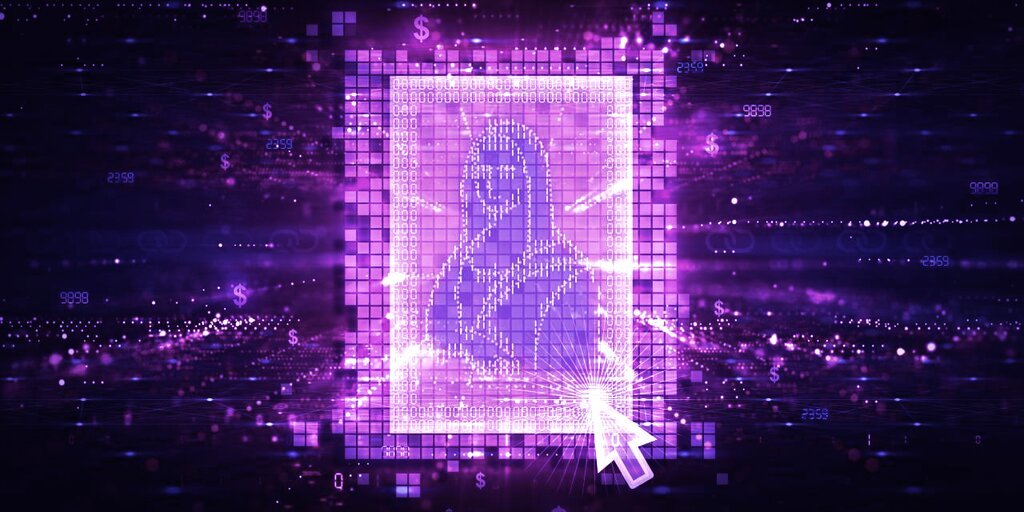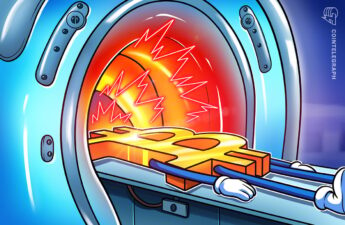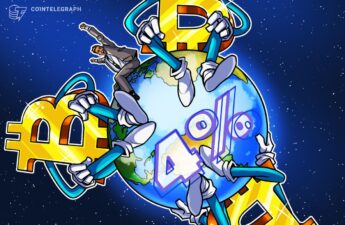Digital art was born in the 1960s, but the 2020s will surely go down as the era when the medium came into its own, and turned the art industry upside down in the process.
Technology, in the form of non-fungible tokens (NFTs) such as CryptoPunks, has played a key role in disrupting traditional art-market dynamics. Online marketplaces and platforms have enabled artists to dispense with gatekeepers, birthing a billion-dollar business that favors creators.
“The art landscape changed when CryptoPunks launched in 2017, and everyone realized art can be traded and exchanged through NFTs,” Singaporean digital artist Metalman, told Decrypt.
He and others describe a transformation that helped online art sales double in 2021, per a report by art organization Art Basel. Accelerating this shift online, platforms such as domain registry .ART—which marks its fifth anniversary this month—have enabled creators to anchor their collections, form communities and reach new audiences.
A new renaissance
“In the past five years, especially in the last two, the interest [in] and perceived value of digital art has dramatically increased,” according to Katelyn DeVan, a digital artist who’s used the .ART platform to reach a global audience from her Ohio studio.
“Blockchain technology, and NFTs in particular, have sparked what I describe as a ‘digital art renaissance,’” she asserts. “Digital art is no longer seen as merely a niche collectable, but also an investment.”
This transformation has been helped along by the pandemic, which led online art sales to surge from 9% to 25% of total global art sales in 2021, according to Art Basel.
“Blockchain technology, and NFTs in particular, have sparked what I describe as a ‘digital art renaissance.'”
—Katelyn DeVan
But the culture is changing too. With no middlemen, artists are able to form deeper connections with collectors—and NFTs have helped to instigate a shift from consumption to sharing, according to .ART founder Ulvi Kasimov.
Liberating artists from their modern-day garrets
“With NFTs, there is a better chance for every artist to become independent. Instead of working for a big corp, you can make a living producing art, it’s definitely a big factor,” says award-winning, Vancouver-based artist Tadeusz Chmiel.
Artwork by Tadeusz Chmiel.
A .ART user, Chmiel has worked in both the digital and physical spheres; as well as painting in oils, he’s created stunning digital work for Star Wars, Marvel and Disney films.
In recent years, he says, “creating digital art has become much more accessible and fun. The hardware is faster, the software is easier (and often free) and there is a video tutorial for almost everything you need.”
Ukrainian artist Stepan Ryabchenko is an early .ART adopter, and believes that “digital art has become a mass phenomenon due to the global trend of virtualization in all areas, including the gradual transition to digital currency.”
He argues that digital currency is the primary factor that led to the growth of interest in digital art, with NFTs bridging the transition and providing “the cultural component.”
NFTs as a springboard to Web3
Katelyn DeVan is the creator of NFT collection Anxious Bulldogs on Brainshambles.art. She has owned and operated many digital art-focused websites in the past, but it was leaning into NFTs that prompted her to join .ART at the start of 2022, she told Decrypt.
“.ART marked a clear divergence between my Web 2.0 and Web 3 lifestyle,” she explains. “Digital art, specifically NFTs, were my entry point into the crypto community.”
Artists who spoke to Decrypt praised the clean look of the .ART platform, and the benefits of using its domain registry. “I chose .ART to showcase my portfolio as it reflects precisely what industry I’m in and it gives a ‘prestigious’ feeling of being part of the art community,” said Metalman.
It’s a community within an ecosystem that’s rapidly evolving and seeking out new platforms; Chmiel highlighted the need for a curated space where artists can meet, that’s better organized than Twitter, Instagram or Discord.
DeVan, meanwhile, pointed to the challenges that still need to be overcome in “digital security, art theft and copyright law.”
The future of digital art
Not all the artists Decrypt spoke to are in agreement about the role of NFTs in the future.
Thomas Obermeir, a German digital artist who specializes in software as art, has worked in the digital field for decades, and said that “NFTs are overhyped and will eventually disappear.”
Ryabchenko, in contrast, believed that NFTs—this new “digital fever,” as he describes it—have plenty of room to grow. But he predicted that physical art and space will soon be increasingly in demand. After all, he argues, “man is made of matter and is drawn to matter.”
“Entrance to the Exit” by Stepan Ryabchenko
Chmiel, meanwhile, argued that the big boom in NFTs may be over. Progress will mean that “investing in digital art will have to be more mainstream, and have a place in an investor’s portfolio,” he says.
“Having a way to digitally sign and track sales of the artwork is huge.”
—Tadeusz Chmiel
And challenges remain. “We’re just at the beginning” of a digital movement that is nudging mainstream, and “still quite bizarre for most people,” said Chmiel. But he argued that the utility of NFTs is beyond doubt: “Having a way to digitally sign and track sales of the artwork is huge.”
The economic and cultural shift set in motion by NFTs is aided by platforms like .ART, which provides its 150,000-strong community of creatives with free website building, as well as links to Web 3 tools such as NFT minting and the Ethereum Naming Service.
It serves to bridge the digital world with the traditional galleries, museums and auction houses, in a period of rapid transformation—where internet and blockchain technologies have invited comparisons with the role of the printing press and accounting ledger in the European Renaissance.
But there’s a vital difference: in the 15th Century, the Renaissance was restricted to Europe; what’s happening today is on a global scale, at an unparalleled velocity.
To explore domain options, visit get.art and use the promo code ARTBDAY to get 55% OFF on all domains, or check with your registrar.
Sponsored post by .ART
This sponsored article was created by Decrypt Studio. Learn More about partnering with Decrypt Studio.
The best of Decrypt straight to your inbox.
Get the top stories curated daily, weekly roundups & deep dives straight to your inbox.
Source: https://decrypt.co/99301/nfts-started-a-digital-art-renaissance-its-far-from-over



